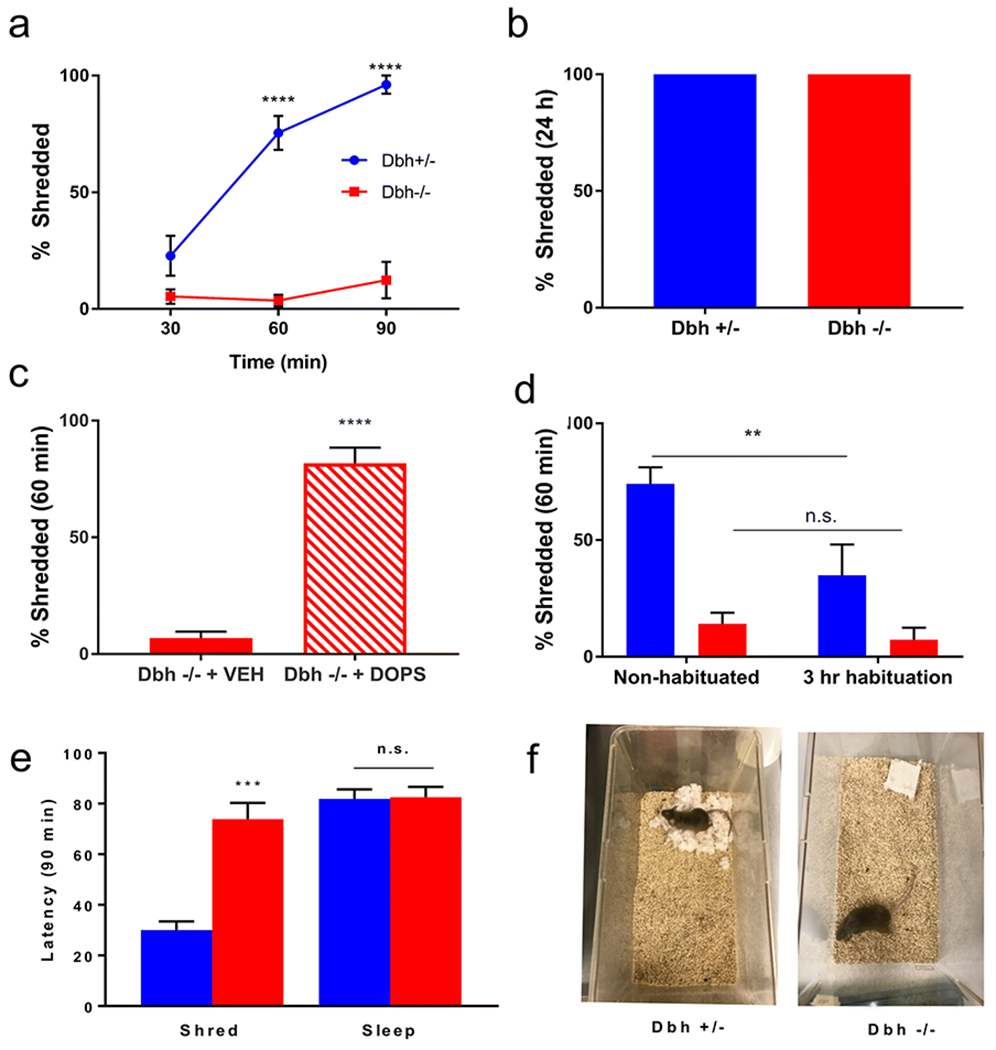Fig. 1.

Assessment of nestlet shredding behavior in Dbh −/− and Dbh +/− mice, a Regardless of task duration, NS behavior was profoundly reduced in Dbh −/− mice (n = 7) compared to controls (n = 7). In control mice, NS increased when task duration was extended to 60 or 90 min compared to 30 min, but NS behavior in Dbh−/− mice (n = 7) did not increase as a function of task duration. b When mice were singly housed with nestlets overnight, NS reached 100% and did not differ between Dbh −/− (n = 8) and control mice (n = 8). c Restoring central NE levels in Dbh −/− mice by treating them with DOPS (1 g/kg) + benserazide (250 mg/kg) 5 h prior to testing (n = 5) increased NS compared to vehicle (VEH; n = 6). d 3-h habituation to the test cage significantly reduced NS in control mice (n = 6), indicating that shredding was mediated by acute cage-change stress. Habituation did not affect NS in Dbh −/− mice (n = 6). e During a 90 min test period, Dbh −/− mice (n = 6) exhibited a longer latency to shred but not to sleep compared to Dbh +/− controls (n = 6). f Representative nests after 60 min for Dbh +/− and Dbh −/− mice. ****p < 0.0001, ***p < 0.001, **p < 0.01, n.s. = not significant.
